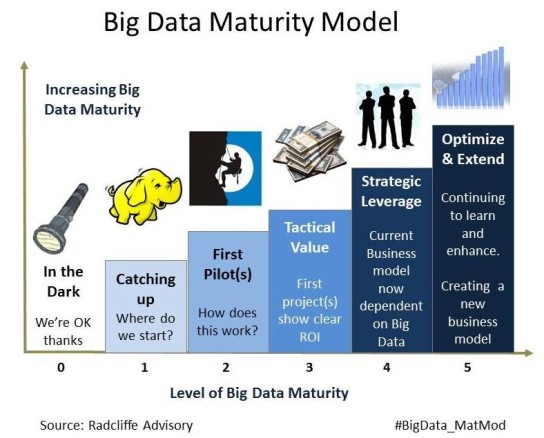By Jan Wegelin and Neil Summers
In recent months many of us have had to adopt a different rhythm to how we live and work. We changed the way we shop to online, we applied for digital services both for engagement and entertainment and learnt to navigate a space we’d heard about but not experienced. These trends will continue to develop and offer us even more options and opportunities in the coming months.
All these developments, systems and integrated structures have one common denominator, large data volumes. Intuitively we know this, but at the same time thinking about how much data is generated becomes unfathomable. It’s the same feeling one gets when trying to imagine what a million oranges or people, grouped together, will look like.
There are practical implications to working from home or engaging remotely or virtually, and we have become well-versed in these, illustrating our ability to adapt. However, the practical side is often easier to notice, easier to measure and even predict. The more important aspect, and often less overt, is the change in our behaviour.
Why are these aspects important?
The principle of Big Data is to use the information generated by people, referenced as customers, clients or users, to determine future choices. What would be the next logical step or what other solutions could be applied in a certain context. In other words, Big Data is a great tool to upsell to people who are already part of a business environment. Examples include:
| ● | Fast food and video: The logic behind this example is that as the line of cars waiting to be served gets longer, the screen showing what products are available changes to products that are easier and quicker to make, in that way quickly process orders and reduce potential irritation in the line of waiting consumers. As the line gets shorter, products with a higher premium are shown on the screen since there is more time available to prepare these dishes. |
| ● | Business intelligence: By using a comprehensive set of variables, a company can bring business intelligence into play to accurately predict customer churn. These insights are far more valuable than hindsight generated from business reports on past actions and results. |
| ● | New product generation: A pharmaceutical business has developed a beeping machine that reminds patients when to take their medication. Simple but effective – better health outcomes for the patient and better stock and revenue predictions for the company. |
| ● | Targeted marketing: In the analysis of historic customer data individual customer preferences are determined. Event-based marketing strategies can then focus on a large volume of coordinated, personalised marketing communications across multiple channels and touch points to those individual customers. |
| ● | Payment delays and cycles: The ability to predict payment behaviour by gaining insight into the drivers of payment delays. Not only does this prediction allow for improved cashflow it can further enhance business offerings and customer satisfaction. |
| ● | Business performance management: Data integration solutions scale as business requirements change. Access to a complete picture of all daily transactions, enabled through automated processes, results in significant administration staff savings (time and resources) and heightened transactions insights. |
| ● | Centralised management tools: Cloud-based data management tools have helped to source data from several data points into a data warehouse to which various departments, such as finance, marketing, business intelligence, market intelligence, and reporting have access. Integrations like these enable daily metrics and performance forecasts as well as analyses. |
How does one navigate through large volumes of data to get to a point where these become strategically meaningful? Liliendahl (2014), provides a simple yet effective flow-diagram to illustrate the journey towards Big Data maturity. The rule of thumb is, start small.

In addition to the start small principle, the following pointers may be useful when considering the process and development cycle of a Big Data solution:
| ● | Start with the end in mind: Decide what it is that will help the business and start building the relevant data sources to get to the answer, do not get stuck on or overwhelmed by large volumes. |
| ● | Beware of the common analysis trap of correlation versus causality. For example, in the sentence “I was hungry when the sun came up” illustrates the correlation between metabolism and sunrise. But the sun was not the cause, the cause was having had dinner ten hours ago before going to bed. There may be correlations or relationships between data sources, but it does not necessarily mean that the relationships are causal. |
| ● | Having different data sources in place to answer key objectives is one thing, getting the different sources to “talk” to one another is a different challenge. Start with small datasets and work out ways in which the different sources can integrate before scaling. |
Having data available is great, having large volumes of it, is even better. Using it to better inform marketing strategies and build better relationships with clients, is invaluable. As Lochy (2019) stated, “As the financial services sector is probably the most data-intensive sector in the global economy, the impact of Big Data on the sector is hard to overestimate”. To this end we’ll unpack SMME access to and, use of, Big Data early in the new year.
About the authors
Jan Wegelin: After 27 years, Jan has gained extensive experience in qualitative and quantitative research practices pertaining to behaviour, consumer, social and business-to-business research. Geographically, he has worked or coordinated projects across 21 countries and five continents. He was Chairperson of the Southern African Marketing Research Association (SAMRA) and is a SAMRA Accredited Researcher since 2011. Jan also helped to develop the framework for Protection of Personal Information Act (POPIA) for the research industry. He has won several awards, most notably The GEN Compass Award for Research Champions in Istanbul (2018) with the College of Charleston as well as the SAMRA 2018 Annual Conference’s Best Overall Paper and the Kantar Innovation Awards.
Neil Summers: Neil has many years’ experience in both sales and the tech sector. Prior to him taking up his role at Moonstone as Business Development and Sales Manager, Neil was involved in many different projects and initiatives. As a consultant, he assisted companies and organisations in developing their skills, courseware and engaging in training projects for companies in the health, hospitality, tourism and financial services sectors. He has had a particular focus on end user environment, compliance and assessment. He has managed various IT projects in both the private and public sectors and consulted to different technology companies with regards sales strategies and business development. Neil has also spoken at international conferences. He remains dedicated to the vision of a broad IT enabled continent.



